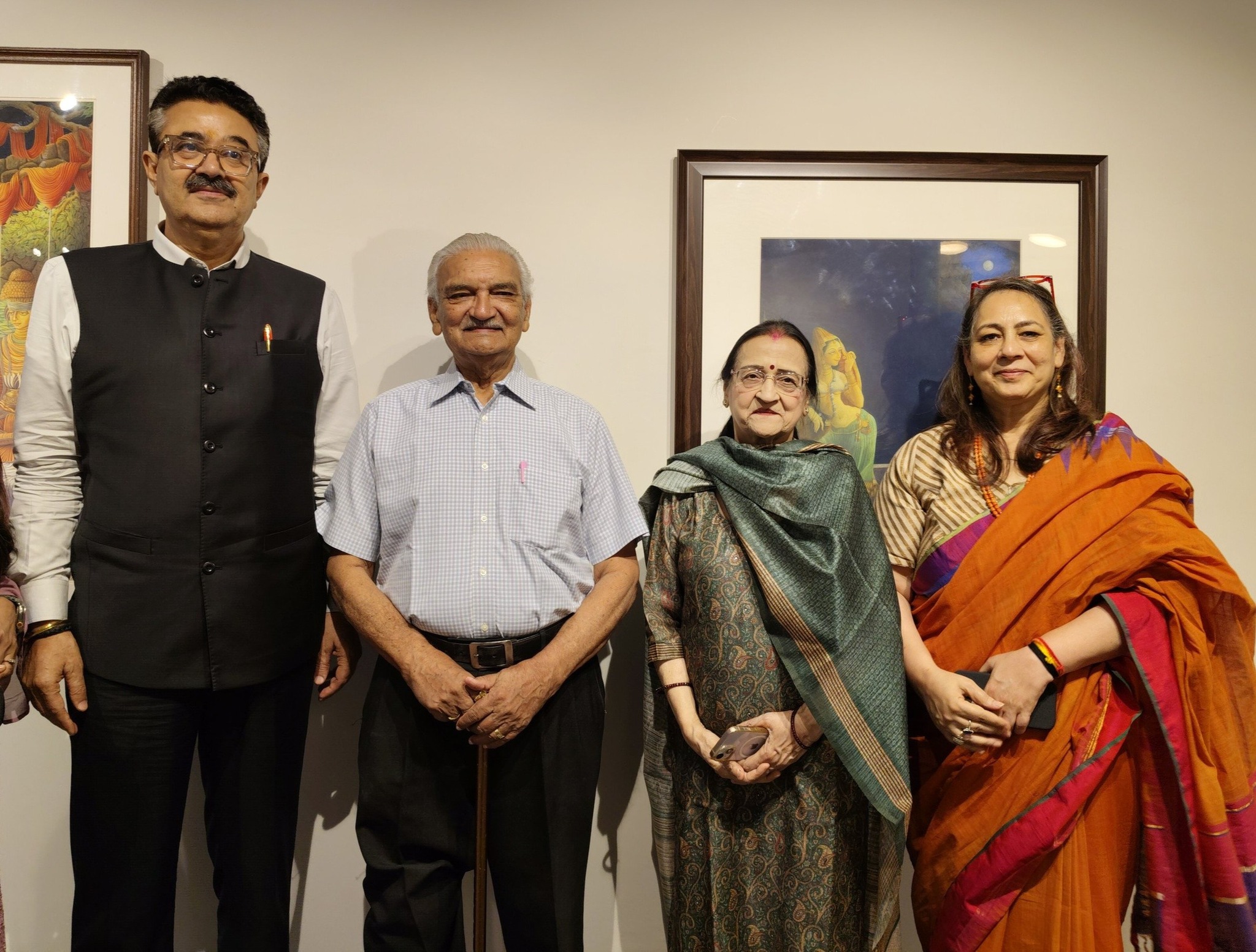Lucknow: The timeless elegance of the Wash technique in Indian painting found renewed expression at Kokoro Art Gallery on Saturday, where a solo exhibition of senior artist Rajendra Prasad’s works titled “Laukik – Alaukik” (The Secular and the Spiritual) was inaugurated. The exhibition was opened by renowned stage, television, and film actor Anil Rastogi and curated by Vandana Sehgal. A large gathering of artists, art enthusiasts, and students attended the launch.
Wash painting, celebrated for its subtlety and transparency, is a delicate style that evolved from Mughal miniature traditions and later flourished under British and modern influences. Over the decades, artists have used it to portray rural life, folk culture, and human emotions with refined sensitivity. Curator Vandana Sehgal described the Wash technique as an extraordinary blend of tempera and ink-and-wash traditions rooted in Asian art, particularly in Chinese and Japanese painting. She traced its journey to India through the works of Abanindranath Tagore, Nandalal Bose, and Asit Kumar Haldar in 1912, who reimagined it through the lens of Ajanta murals and the Bengal School, eventually making Lucknow’s College of Arts and Crafts a key center for this form. Artists like B.N. Arya later gave the Wash technique international recognition.
The process of Wash painting involves layering delicate coats of watercolor, repeatedly washing and reapplying until a dreamlike, multi-hued, and timeless effect emerges. This technique makes the paintings not just visual experiences, but immersive encounters.
Rajendra Prasad, regarded as one of the foremost exponents of contemporary Wash painting, has breathed new life into this tradition. His works on display captured both the laukik—the everyday realities of rural and folk life—and the alaukik—the spiritual and symbolic dimensions of existence. Scenes of women combing their hair, fishermen casting nets, and villagers greeting the sunrise portrayed simple life with emotional depth. At the same time, his paintings on Krishna-Radha romances glowed with tender mysticism, while those inspired by the life of the Buddha carried themes of meditation, peace, and moksha. Symbols such as the begging bowl, the lotus, saffron robes, and the Bodhi tree enriched his canvases with layered philosophical meaning.

Exhibition coordinator Bhupendra Asthana shared that Rajendra Prasad (b. 1958, Uttar Pradesh) is a senior contemporary painter, art teacher, and conservation expert. A graduate of the College of Arts and Crafts, Lucknow University, with an MFA in Creative Painting (1996), he has held solo exhibitions in Mumbai, New Delhi, and Bengaluru, and participated in international group shows in London and Rome. His works are preserved in collections including Lalit Kala Akademi, New Delhi; UP State Lalit Kala Akademi; Ramkatha Museum, Ayodhya; and several universities and private collections. He has also contributed to heritage painting conservation projects with INTACH. After retiring as Associate Professor and Head of Fine Arts at Dr. Shakuntala Misra National University, Lucknow, he continues to influence Indian art and pedagogy.
The exhibition features 15 works, each reflecting Prasad’s mastery over transparency, symbolism, and emotional nuance. Guests including Navneet Sehgal, Awadhesh Mishra, Mamoon Nomani, Rakesh Chandra, Sushil Kannaujia, Rajendra Mishra, Ratnapriya, Ravikant Pandey, and Alok Kumar were among those present.
“Laukik – Alaukik” will remain open for public viewing at Kokoro Art Gallery until October 8, 2025.





